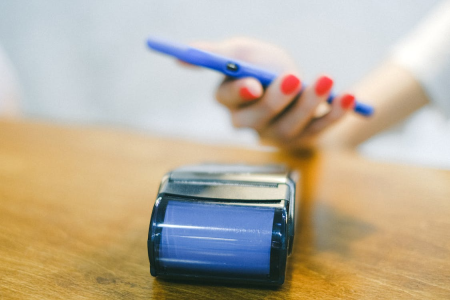Phone payments are rising fast—but here’s why a card in your pocket still matters
By
Maan
- Replies 0
Most Aussies can’t resist the ease of tapping their phone at the checkout.
But even as digital wallets boom, we’re still not ready to ditch the good old plastic card.
Why are we so reluctant to go fully digital?
A new survey by money.com.au revealed that 73 per cent of Australians still preferred carrying a physical debit or credit card, despite the growing popularity of mobile wallets.
Younger generations were leading the shift to digital-only transactions, but older Aussies remained firm in their preference for a backup option.
Mobile wallets accounted for 45 per cent of all card transactions this year—up from 39 per cent in the previous year.
Finance expert Sean Callery said the attachment to physical cards came down to trust, habit, and practicality.
‘It’s partly habit and trust, but also about having a back-up when your phone dies or the tap doesn’t work at checkout,’ he said.
Money saving expert Joel Gibson echoed the sentiment, likening physical cards to a form of ‘insurance’.
‘Sometimes if I’m going for a surf, I’ll take a physical card in my back pocket rather than leave the phone on the beach,’ Gibson said.
‘If I’m with my kids, I can give them a card to go and tap to buy something, whereas it’s not so simple to give them my phone, which they need to unlock with my face.’
The generational divide was clear in the survey results: 84 per cent of Baby Boomers, 75 per cent of Gen X, 66 per cent of Millennials, and 55 per cent of Gen Z said they wouldn’t give up their physical cards.
Despite predictions that mobile wallets could dominate all retail card payments by 2032, Gibson believed that vision was overly optimistic.
‘It’s a bit like when we talk about cash,’ he said.
‘As long as cash is in circulation, then a small percentage of transactions will always be cash because there will be some people who prefer it in certain situations.’
‘I think it’s the same with physical cards,’ he added.
‘I think there will always be some situations where it’s more practical to use a physical card, and that’s why I suspect unless they do away with physical cards altogether, then it’ll always be part of the mix.’
The study also found that only three per cent of Australians still used cash to pay for goods and services.
Gibson said the move away from cash was largely driven by business motivations.
‘Businesses are pushing us away from cash because it’s more expensive for them to handle cash transactions than it is to handle digital transactions, as with the digital transactions we tend to pay the fee rather than the business—or it’s shared,’ he said.
‘We can learn from that when it comes to future payment options.’
‘Business will push us towards whatever is cheapest for them, and that may, if we’re not careful, end up being something that’s not cheapest for us.’
According to Apple and Google, neither charged additional fees to merchants or cardholders for using digital wallets.
If you’ve ever wondered just how widespread tap-and-go payments have become, you're not alone.
While many still carry a physical card for peace of mind, there’s no denying the country is rapidly shifting toward a cashless future.
For a closer look at what’s driving this change—and the potential pitfalls—check out this related story.
Read more: Tap-and-Go Nation: Inside Australia’s $160 Billion Cashless Boom

Could the trusty plastic card outlast our phones at the checkout?
But even as digital wallets boom, we’re still not ready to ditch the good old plastic card.
Why are we so reluctant to go fully digital?
A new survey by money.com.au revealed that 73 per cent of Australians still preferred carrying a physical debit or credit card, despite the growing popularity of mobile wallets.
Younger generations were leading the shift to digital-only transactions, but older Aussies remained firm in their preference for a backup option.
Mobile wallets accounted for 45 per cent of all card transactions this year—up from 39 per cent in the previous year.
Finance expert Sean Callery said the attachment to physical cards came down to trust, habit, and practicality.
‘It’s partly habit and trust, but also about having a back-up when your phone dies or the tap doesn’t work at checkout,’ he said.
Money saving expert Joel Gibson echoed the sentiment, likening physical cards to a form of ‘insurance’.
‘Sometimes if I’m going for a surf, I’ll take a physical card in my back pocket rather than leave the phone on the beach,’ Gibson said.
‘If I’m with my kids, I can give them a card to go and tap to buy something, whereas it’s not so simple to give them my phone, which they need to unlock with my face.’
The generational divide was clear in the survey results: 84 per cent of Baby Boomers, 75 per cent of Gen X, 66 per cent of Millennials, and 55 per cent of Gen Z said they wouldn’t give up their physical cards.
Despite predictions that mobile wallets could dominate all retail card payments by 2032, Gibson believed that vision was overly optimistic.
‘It’s a bit like when we talk about cash,’ he said.
‘As long as cash is in circulation, then a small percentage of transactions will always be cash because there will be some people who prefer it in certain situations.’
‘I think it’s the same with physical cards,’ he added.
‘I think there will always be some situations where it’s more practical to use a physical card, and that’s why I suspect unless they do away with physical cards altogether, then it’ll always be part of the mix.’
The study also found that only three per cent of Australians still used cash to pay for goods and services.
Gibson said the move away from cash was largely driven by business motivations.
‘Businesses are pushing us away from cash because it’s more expensive for them to handle cash transactions than it is to handle digital transactions, as with the digital transactions we tend to pay the fee rather than the business—or it’s shared,’ he said.
‘We can learn from that when it comes to future payment options.’
‘Business will push us towards whatever is cheapest for them, and that may, if we’re not careful, end up being something that’s not cheapest for us.’
According to Apple and Google, neither charged additional fees to merchants or cardholders for using digital wallets.
If you’ve ever wondered just how widespread tap-and-go payments have become, you're not alone.
While many still carry a physical card for peace of mind, there’s no denying the country is rapidly shifting toward a cashless future.
For a closer look at what’s driving this change—and the potential pitfalls—check out this related story.
Read more: Tap-and-Go Nation: Inside Australia’s $160 Billion Cashless Boom
Key Takeaways
- 73 per cent of Aussies still preferred carrying physical cards.
- Mobile wallets now made up 45 per cent of card transactions.
- Younger people were more likely to go digital-only, while older generations stuck with physical cards.
- Experts warned businesses might prioritise savings over consumer convenience.
Could the trusty plastic card outlast our phones at the checkout?








